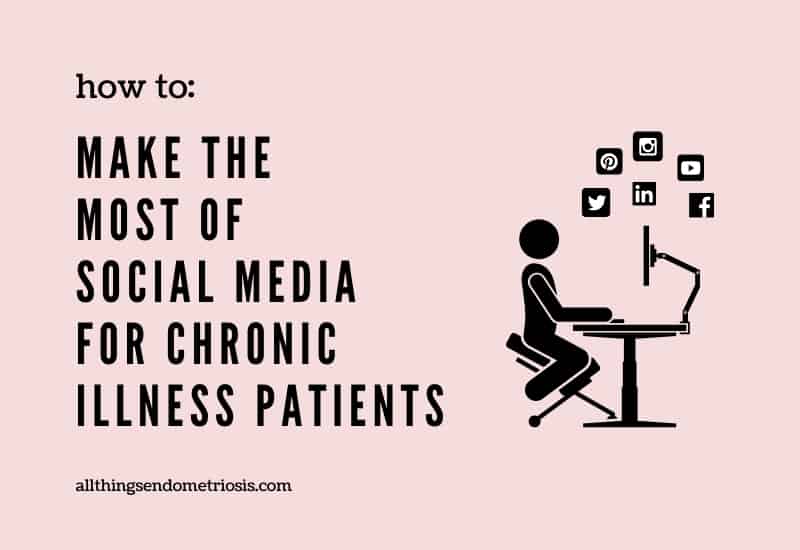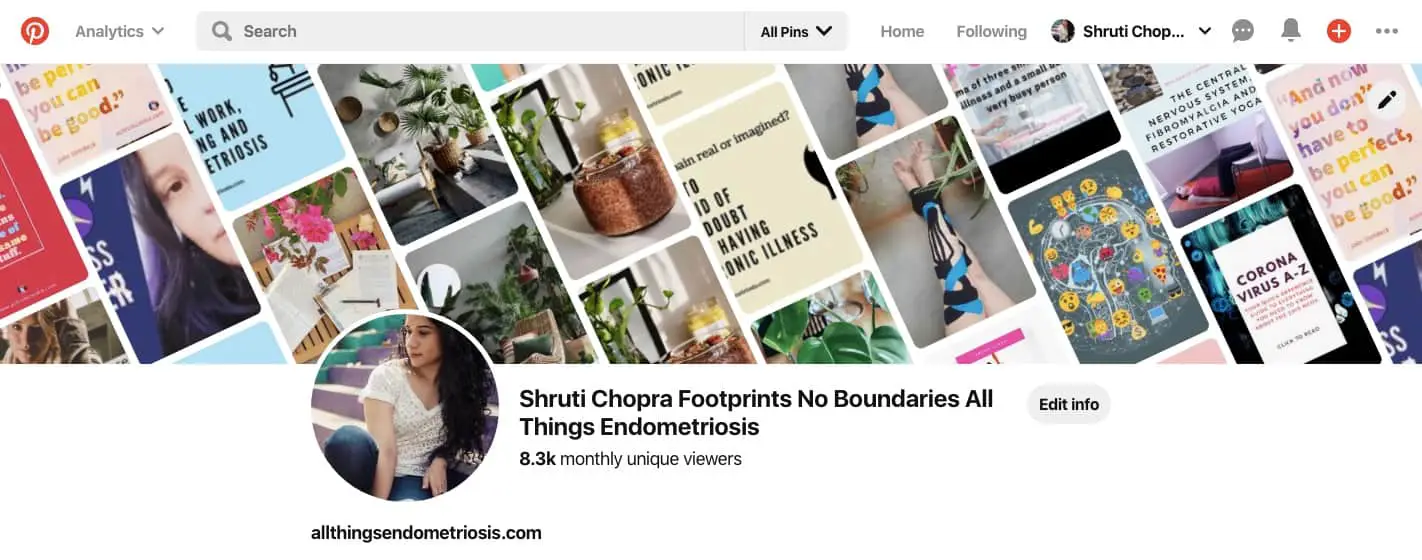
Social media can prove to be quite an enriching experience for those with chronic conditions. But how do you make the most of this and for it to remain a positive influence? I look to answer this and more…
What is Social Media?
Social media is a space where based on your medium of expression you’re able to share content that expresses your thoughts, aspects of your life, allows you to stay in touch with those that are further away, network – connect with others, read and watch other people’s content and gain a knowledge base too.
It’s supposed to be a space that brings us closer together in this virtual world.
Many argue that it takes us away from those physically present around us. True for sure, but I think for that, social media tools cannot be blamed – it’s something that’s in our hands to control. It’s a choice for us to exercise.
But that’s not what I want to speak about today – but you can contemplate on it, based on your own usage.
I’m looking to share is what social media offers us, us who have chronic conditions and how we can use these tools to help us improve our mental state and quality of life by opening up to the wealth of content out there.
Let’s look at some of the social media platforms available to us and see how we can maximise them.
I’m obviously speaking purely through experience of using these and if you’ve used other platforms that have worked well for you, please do share them in the comments section below… so here goes…
1. Twitter
Twitter is a micro-blogging website that allows you to write upto 280 characters, upload short videos, links to articles, read news, get opinions… give opinions – a place for debate with possibilities of high engagement.
How to Maximise Twitter if You Have a Chronic Condition:
I first went onto Twitter like many, not knowing much about it – I didn’t understand what tweeting meant and what I should even be doing on the platform.
But by using the search box, you can search terms related to your medical condition.
This will allow you to see who speaks about the things you’re interested in, what the latest discourse is on your condition, you may even come across helpful articles that patients are writing – these are the articles that don’t show up on Google search’s the first page because it’s taken over by the likes of WebMD.
You get a lot of personal story content here which personally, I find extremely helpful.
I have connected with people over their challenges – it’s helped me understand how I can improve things for myself too.
It’s also been a space where I share what I write about – including my medical challenges – in fact it’s aided me to do the one thing I feel has become a purpose for me… to build awareness about endometriosis, Ehlers-Danlos syndrome and the other conditions I face.
Relevant Read:
So use Twitter as a platform to share your thoughts, interact with others and read content that would usually go amiss.
If you wish to follow me on Twitter then you can right here
New Blog Post after over 9 months…
A Q&A on: Pooping (Bowel Movements) & Periods
This is a topic we don’t usually speak of very openly, but I thought to do that today. Why? Because I realised I never have and it may help someone out there.https://t.co/ll5RTyXj6o
— Shruti Chopra – Footprints, No Boundaries (@FootprintsNB) December 12, 2022
2. Instagram
Instagram is my favourite place because it’s visual, it’s more about photos and explaining what you wish to through images.
If you love taking photos or seeing photos and knowing the stories behind them then this is the place to be.
How to Maximise Instagram if You have a Chronic Condition:
I know for many it’s a space to share their holiday photos and just stay in touch with family and friends. And that’s great.
For me, it was a place which inspired me at my worst times (a story for another day).
Instagram isn’t just a place for those who are posting about their fun holidays, their outfit of the day, what they had for breakfast-lunch-dinner, what their cute dog did (fyi – I had a cute dog too!), or what brand a celebrity wore… there is a another world on Instagram of those who have chronic conditions who are interacting through likes, comments and shares, encouraging one another through their tough flare ups.
A lot of these posts are extremely informative and again, you get the patient perspective, you get to read and see tips that doctors wouldn’t know about. But to be fair, you now also find some aware doctors, sharing on Instagram too.
So let me give you an example, some of the tips I got on how to prepare for endometriosis excision surgery and how to take care after it came from Instagram.
These were real women sharing their real experiences enabling people like me to have easier experiences which I am eternally grateful for.
In fact, many of these amazing people even checked up on me when I was going through my surgery – they didn’t need to, but they did. That sense of community is very up-lifting.
My initial personal purpose on Instagram was to just share my medical journey – not just the physical side of it, but the mental too. It was an outlet for me, but as people caught on and started following me, I realised how many connected with what I said and how many people this was helping – and not everyone has a medical issue either, yet they relate.
So get onto Instagram, search for terms or people that resonate with what you want to know about.
Like-share-comment and there will be so much for you to learn and even for you to teach through your own experiences.
My Instagram:
View this post on Instagram
3. Facebook Pages & Groups
For many of us, Facebook is about staying connected with long lost friends and family, which is great but how do you go beyond that connect?
How to Maximise Facebook if You have a Chronic Condition:
I have a Facebook page where I post all my Instagram posts and website articles on.
It’s the one place that has both things posted and there are people out there who prefer that – they get access to everything I put out in one place.
It allows people to comment and interact over what’s shared.
But what I find most fascinating about Facebook are the groups.
There are specific groups created by regular Facebook users that bring together similar minds or those with some common issues and concerns.
Usually these groups are closed groups to make sure that those that shouldn’t be there aren’t there, therefore you have to request them to let you into these groups – and I’ve never faced an issue getting in, but I can understand the need for protecting the people and the discourse that goes on.
Now how are these specific closed groups beneficial?
For example, there is a Facebook group called Nancy’s Nook. It’s for those with endometriosis looking for various resources like specialist doctors, discussions on treatments and various other concerns relating to endometriosis.
A space like this not only gives you important information through women who have experienced it, but there is also a sense of community, a sense of helping one another which we need when we’re feeling lost and alone in our medical battles.
So I would highly recommend being on Facebook for such pages and groups.
Read Here For:
4. Pinterest
Pinterest is a visual social networking site where you can create various virtual pin-boards on which you ‘pin’ images or short videos relating to that board.
Those images more often than not are linked to external websites which give you further information related to that image.
But, I hear you ask, how does this help me? Let me explain…
How to Maximise Pinterest if You have a Chronic Condition:
People create topic specific boards, for example, I have a board on Ehlers-Danlos syndrome, Endometriosis, PCOS etc- I pin images from my articles and images I come across from all over Pinterest and curate them on my pin-board.
Each pin (image/video) provides resourceful information about the topic of that board.
You don’t need to be creating pin-boards for you to be on Pinterest, you can just type in the topic and get infographics and links to content that may not be so easily found on other platforms.
Pinterest isn’t just for medical issues, you can use it for fashion, hairstyles, quotes, cars, art… I used Pinterest when I was renovating my home to gather ideas for each room – it made it easier for me to explain to someone what I wanted.
Warning: Pinterest can be extremely addictive, so be careful of the time spent! O’ and while you’re on there, check out my Pinterest boards 🙂
5. LinkedIn
LinkedIn is a professional networking platform where you can interact and look to develop your career. A place where professionals of various industries will post about their work and their professional exposure – like an online résumé.
How to Maximise LinkedIn if You have a Chronic Condition:
The reason I’m on LinkedIn is not to network for a job, but to promote the articles of my website, to share my experiences of living with a chronic condition and connect with others who speak about new medical research and their findings.
You may be wondering – speaking of your medical condition may not sound professional right? In fact it is. It’s still essential for the professional world to know of chronic conditions that could control and hamper career development and even know how to work around it.
Therefore, on this platform, look out for medical information for the professional who is still looking to make a living.
If you wish to connect with me on LinkedIn, then you can here.
6. YouTube
YouTube is a video sharing platform where you can follow your favourite YouTubers, comment-like-dislike-and share their content – O’ and subscribe too!
How to Maximise YouTube if You have a Chronic Condition:
YouTube is the second largest search engine after Google – that says it all in-terms of gaining resourceful information.
This space is fantastic to listen to webinars and medical conferences where noted speakers in various medical fields share their experiences.
Other than these professionals, you get to view videos of those patients who have the same medical conditions as you and are willing to speak about their challenges, how they overcome those be it through medical treatment, the exercise plans they follow, the diet they stick to – you can find it all.
I too have a YouTube channel, which in July 2020 I’ve revived – it’s my fourth attempt and I’m constantly working to be consistent with it. So far, I’m so pleased with the impact it’s making in people’s lives. I speak of my health issues, and even how I help my skin from the impact of medical conditions and medications.
To know more, check this out:
Fun Fact: YouTube is where I learnt how to operate a camera and learnt so much about sound in videos – so don’t look at it as a space for just gaining medical information or watching some fun stuff, but also as a place of learning from people who are like us.
My YouTube Channel is here…
The one common theme that runs through all these social media platforms is information, interaction and a sense of community that is supportive and even opinionated.
These platforms help us gain insights in areas we may end up easily overlooking or we may be the one providing the insights that could be helpful to someone else and might be missing out on an avenue to do so.
Either way, if used well, it’s a place that can make you feel happy and comfortable.
If you would like to share your social media stories and what platforms have worked best for you, then please do let me know in the comments section.
Thank you for reading… and have a good day! 🙂
~~~~~~~~~~~~~~~~~~
Disclaimer: I am not a medical professional. I am a patient and have created this platform to share my experiences. This is all purely informative and in no way am I providing medical advice. Please consult a medical professional.



I can’t imagine life without social media now, mostly for the community aspect (and that I got to meet you) but also because sharing resources and personal experiences is so helpful and makes a difference to my day. And you know which platform I like the most . . . !!
Twitter has been the social media platform I used to have no use for, but have lately gained an appreciation. It just easily connects you to all sorts of people with chronic illness and disability.
Shruti,
Thank you for putting this together! Your post has me thinking again about being active on Instagram, though I really don’t do many photos generally.
Connecting with others can be so important – I have done that predominantly on facebook(FND Hope has several facebook groups) but to reach out to the greater community, I’ve been using twitter more and more!
Very helpful explanations. I never thought I’d be using social media like I am now. However, connecting with others through these platforms has given me so much: information about my health, friendships, support, purpose. I never thought about being anything other than a teacher. But now, I have a new purpose and that is to advocate for better living for those with chronic illness and social media has provided the venu.
Love how you broke each platform down into bite-sized understandable pieces! Each platform definitely has its pros and cons but great connections can start from anywhere 🙂